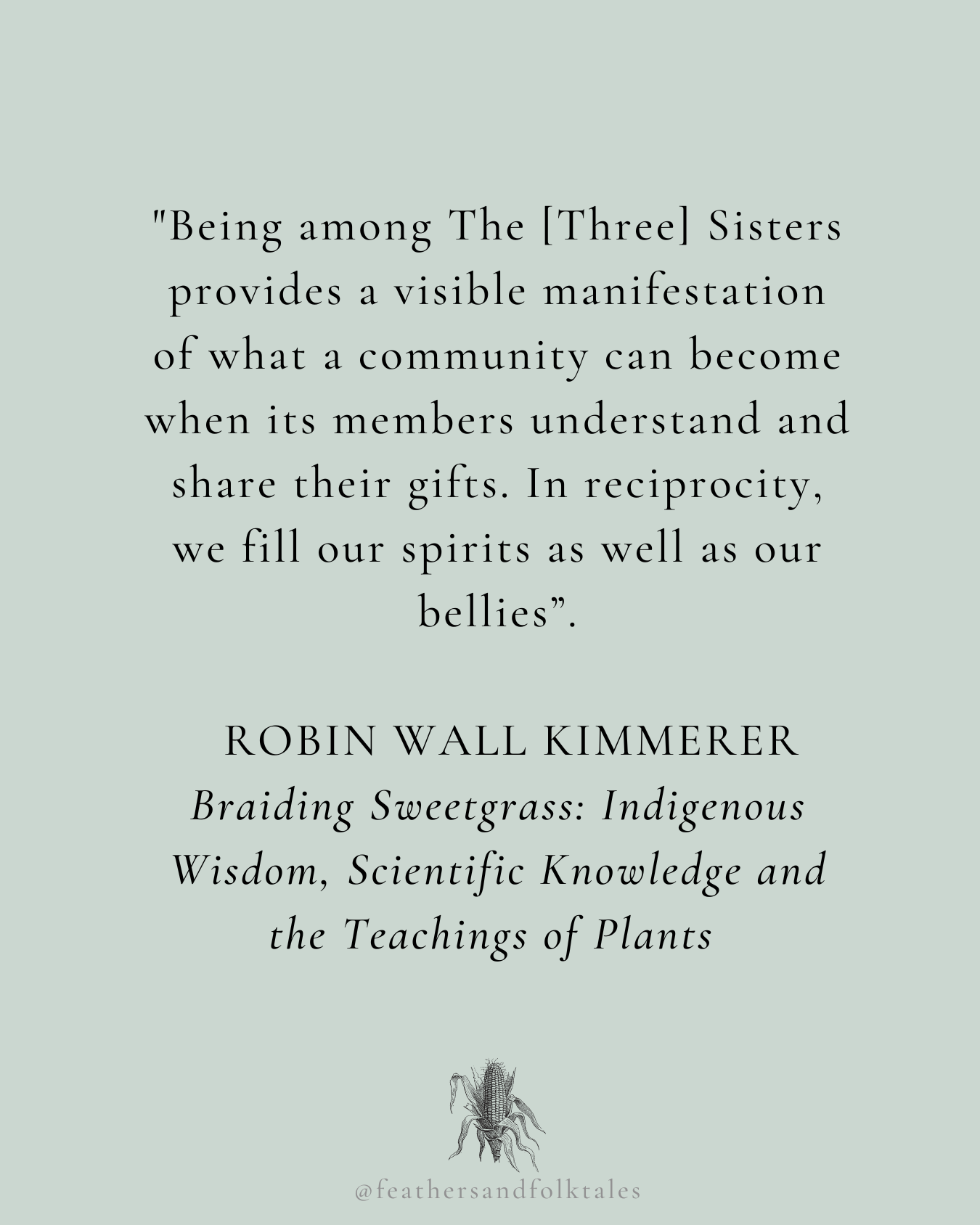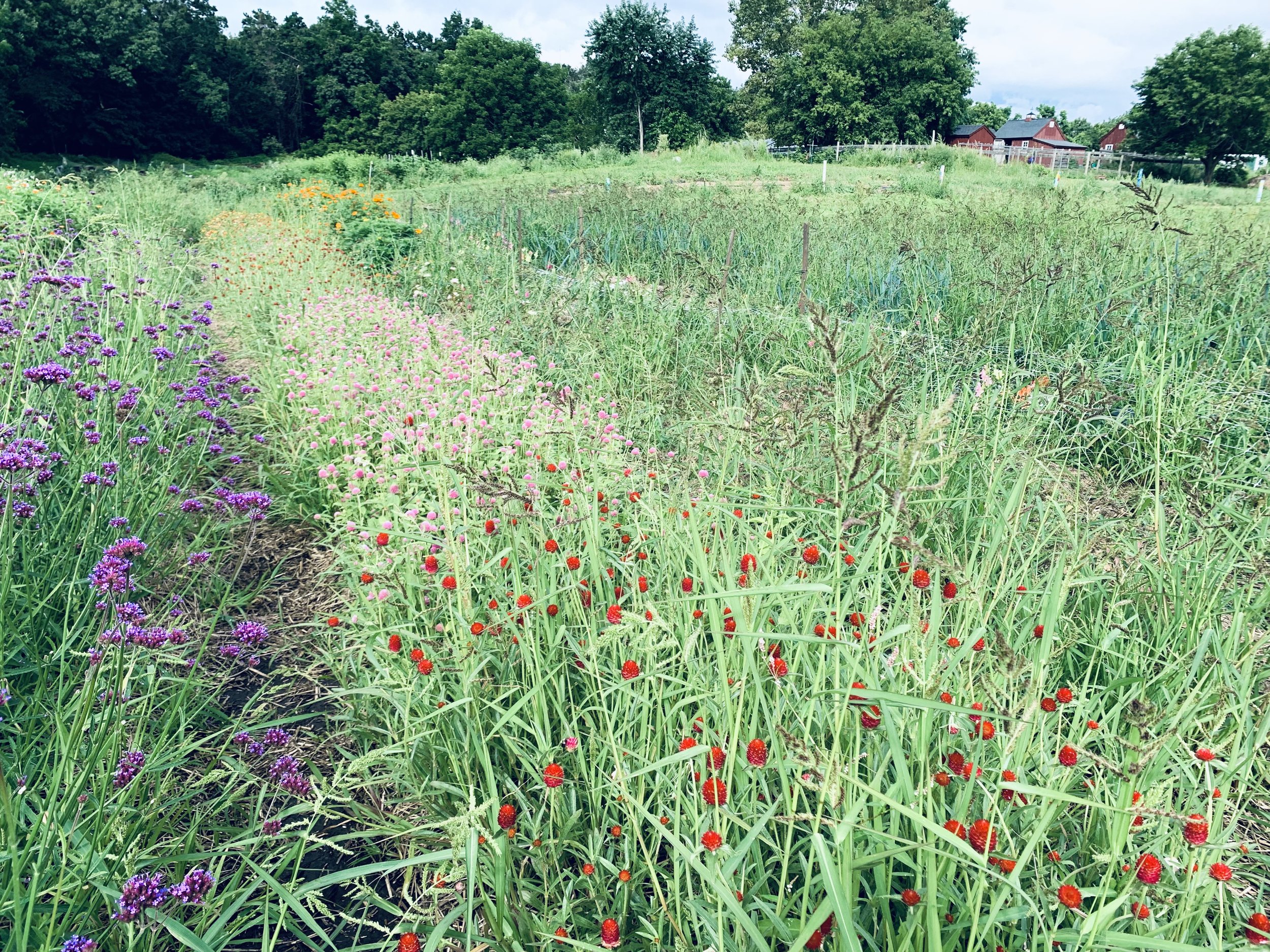It is that time of year for gathering the harvest, taking stock of the earth’s abundance, both real and mythical because in truth, we are deeply nourished by both. . .
I am here at Lexington Community Farm where organic crops are grown, sometimes including the indigenous crops of corn, beans and squash. Native to this landscape is an ancient folktale of Three Sisters: Sister Corn, Sister Bean, and Sister Squash, whose relationship growing up is characterized by reciprocity and interdependence.
The North American indigenous folktale of the Three Sisters is told from Mexico to Montana and celebrates a kinship system of mutual thriving. Sister Corn first sprouts and provides a sturdy pole around which the Sister Bean grows her vines. Sister Bean, in turn returns nitrogen to the soil for all three plant Sisters. Sister Squash leaves are large and shade the soil, retaining soil moisture and suppressing weeds for all three.
In this story Sister Corn, Sister Bean and Sister Squash, though different from each other, each provide some benefit to the others’ growth and health. I absolutely love the priceless wisdom this story offers us, especially in this day and age where relationships between women are sadly often characterized by competition. The Three Sisters Folktale shows us a different way to relate to each other. Each sister’s uniqueness is celebrated, nurtured and recognized as important to the health of the whole. The central mythos, the guiding narrative, of this folktale is cooperation, reciprocity and interdependence all of which are quite different from survival of the fittest, competition and self-interest. This folktale teaches me that in this season of harvest we are not just gathering food to nourish our bodies, but we are reaping wisdom for our psyches, and our spirits and how to relate to one another in our communities. Robin Wall Kimmerer, plant ecologist, describes the relationship between these three plants, which are traditionally grown together in indigenous cultures, so eloquently in her bestselling book Braiding Sweetgrass: Indigenous Wisdom, Scientific Knowledge and the Teachings of Plants. She says, “The land is the real teacher. All we need as students is mindfulness”.
Kimmerer says it was thought that people learned about the three sisters from three women who came to a starving village on a winter night. One was tall dressed in yellow long flowy hair, the other was robed in green and the third, in orange. They were fed well with what little the villagers had left. In gratitude for their generosity, the Three Sisters revealed their true identities: Corn, Beans and Squash and gave themselves to the people in a bundle of seeds so that they might never go hungry again.
Lexington Community Farm, an organic farm in Massachusetts near my home
There is one last gift that the Three Sisters offer us when we eat them together. Corn is a superb starch carbohydrate that people can survive all winter on, but a human cannot survive on corn alone, it is nutritionally incomplete. Beans complement the corn to make a high protein meal, and squash provides additional vitamins. The Three Sisters, in this way, complement each other when eaten together in a meal to meet our nutritional needs.
Kimmerer says, “Together these plants - corn beans, and squash - feed the people, feed the land, and feed our imaginations, telling us how we might live”. I absolutely love this tender approach to treasuring each being whether person or plant, and find it so heartwarming to learn the very crops we eat, who are our Elders on this planet, offer us nourishment, nutrition and a model to live by as well. Inspired by this folktale, I created a handmade linocut print of Sister Corn, Sister Beans and Sister Squash as an offering of thanks and gratitude to Native food and folklore. . both of which have a place at my table.
Reference:
Kimmerer, Robin Wall (2013). Braiding Sweetgrass: Indigenous Wisdom, Scientific Knowledge and the Teachings of Plants. Milkweed Editions.










Singebis is an ancient Ojibwe winter folktale about a beloved folk hero and wild grebe whose perseverance, courage, resilience, and loyalty in the face of Kabibona'kan, Winter Maker, shows us we can do the same in the face of adversity. This story asks us to reflect on what kinds of Kabibona'kans do we face in our lives today that threaten to divide us from others who might be our friends? This folktale reminds us we all have the capacity to tap into our inner Singebis, find our inner trickster, and remind ourselves that even a little wild bird can outsmart the Winter Maker!